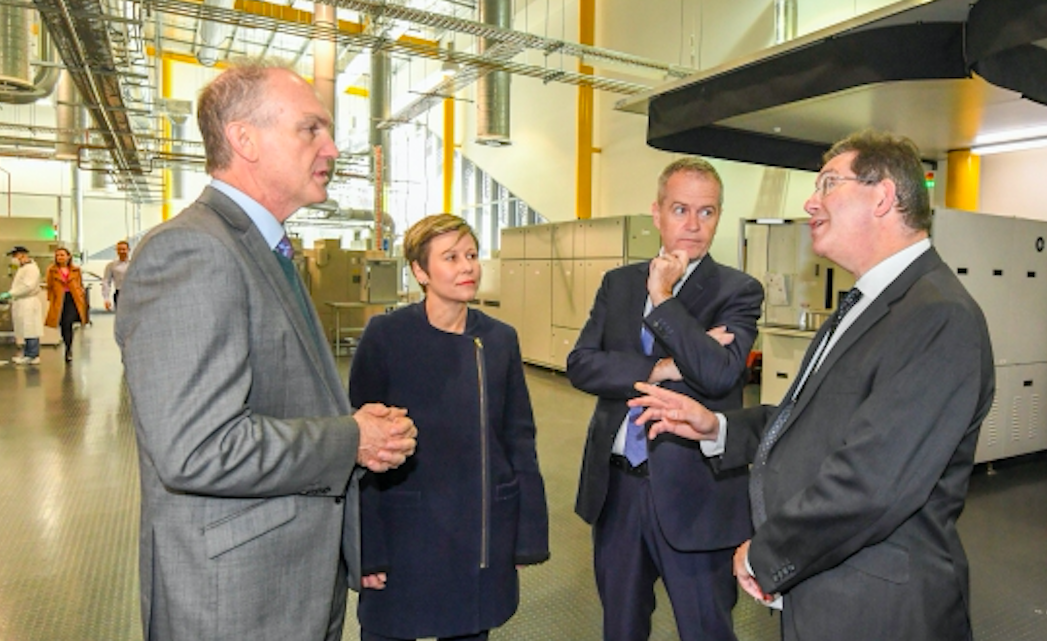Almost 16.4 million Australians are on the Australian electoral role as the country heads towards a federal election that will prove decisive to the renewable sector over the next three years. The Australian Electoral Commission made the announcement today, noting that 100,000 people signed up to vote in the lead up to the rolls closing.
“A national enrolment rate of 96.8% was for a long time thought to be unattainable,” Electoral Commissioner, Tom Rogers said in a statement.
It is relatively safe to assume that many of the new entries to Australia’s electoral roll are young people. The 2017 Marriage Equality survey was reported to have seen a large number of younger voters sign up to vote – some 98,000 new enrolments. And younger people tend to care more about taking action on climate change and are supportive of renewables. Participation at recent school climate strikes are evident of this, showing that not only are young people likely to be impacted most severely by climate change, but that they are ready and willing to take action.
Prime Minister Scott Morrison’s response to striking school students was less than receptive: “What we want is more learning in schools and less activism in schools.”
And on the campaign trail, both the Labor and Coalition parties are striking a different course on climate change policy and support for renewable deployment – including solar PV. After almost a week of the Coalition lambasting Labor’s climate policy last week on the basis of costings, Opposition Leader Shorten eventually returned fire, calling the government’s derision “malicious and stupid”.
Shorten came under fire from the Coalition due to Labor’s refusal to specify the cost of its climate change commitments, commitments which far outstrip the Coalition’s $2 billion Climate Solutions Fund (an extension of former PM Tony Abbott’s Emissions Reduction Fund [ERF]). Morrison has stated, more than once, that the Climate Solutions Fund will carry Australia to its 2030 emissions reduction targets of 26 to 28%, “in a canter”. In contrast, a Shorten Labor Government proposes a reduction target of 45% by 2030.
The $2 billion pledge by the Prime Minister is supposedly to be dished out to as a lure to carbon emitters which are considering taking reduction measures, but very little else has been specified, and short term spending from the ERF is paltry despite the large headline figure. In an interview on Tasmanian radio last week the Prime Minister even appeared to leave the door open to a nuclear energy option, despite legislative bans. Though his government doesn’t intend to subsidise nuclear energy, it was “not, not on the agenda”, with the stipulation that it would have to pay its own way.
By failing to specify potential costs to their ambitious plan, the Labor Party left the door open for the Coalition to speculate at will, and figures well over $30 billion have been bandied around. The Prime Minister says that “it’s important to have balance in your emissions reductions policies. You’ve got to have the cool head as well as the passionate heart.” Morrison’s comments echo Coalition arguments that Labor’s audacious targets would crash the economy and cost local businesses. In reply, Shorten said “that is so intellectually dishonest it doesn’t even deserve to be talked about.”
As part of Labor’s 45% target Shorten has been looking to embrace solar like a photogenic baby on the campaign trail. A major part of his potential government’s plan involves rebates given to households and business that install batteries to store energy generated by solar PV. Labor hopes the means-tested $2,000 rebate can triple the number of homes using batteries. Following up on this the Opposition promises to expand support for solar PV installation to lower-income households to the tune of $100 million. On top of these promises Labor says it will up funding to the Clean Energy Finance Corporation and institute the National Energy Guarantee that was left out to dry after the 2018 Liberal Party leadership spill.
One additional wild card has come in the form what is fast becoming known as Australia’s ‘watergate’. Federal Energy Minister Angus Taylor is deeply embroiled in a mounting scandal over $80 million in water buybacks carried out in 2017. While there is much to play out, it seems likely that the issue and controversy will sideline Taylor from the campaign trail – leaving Labor more space to prosecute its climate and energy policies. And if Labor can control the agenda on renewables, efforts to reduce carbon emissions, and technologies of the future like solar and PV, the views of young people may be decisive come May 18.
Author: Blake Matich
This content is protected by copyright and may not be reused. If you want to cooperate with us and would like to reuse some of our content, please contact: editors@pv-magazine.com.








By submitting this form you agree to pv magazine using your data for the purposes of publishing your comment.
Your personal data will only be disclosed or otherwise transmitted to third parties for the purposes of spam filtering or if this is necessary for technical maintenance of the website. Any other transfer to third parties will not take place unless this is justified on the basis of applicable data protection regulations or if pv magazine is legally obliged to do so.
You may revoke this consent at any time with effect for the future, in which case your personal data will be deleted immediately. Otherwise, your data will be deleted if pv magazine has processed your request or the purpose of data storage is fulfilled.
Further information on data privacy can be found in our Data Protection Policy.